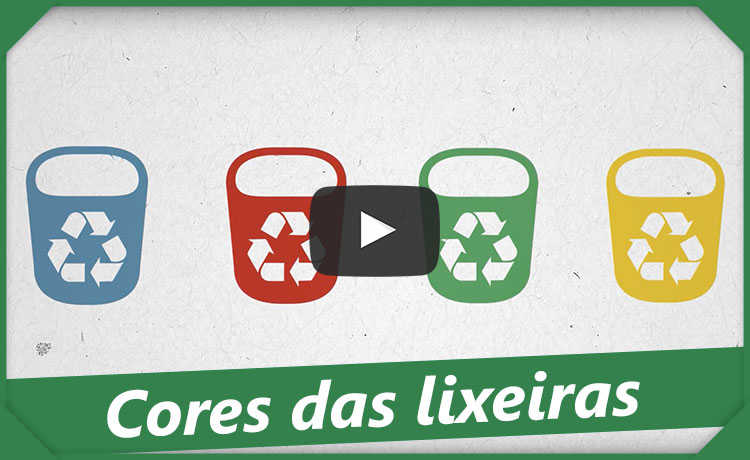Know the types of phenol and where they are found
The different types of phenol are used as the basis for the manufacture of various products.

Edited and resized image by Hans Reniers is available on Unsplash
You've probably heard of a substance classified as a phenol, or at least made use of a product made based on the phenol group. But do you know for sure the characteristics of these elements? Do you know which products they are found in? Possibly the answers to these questions will cause surprise, as the occurrence of phenols is extremely common and they are more present in our daily lives than we can imagine.
Phenol (C6H6O) is an organic chemical compound that has at least one -OH (hydroxyl) group directly linked to a benzene ring (aromatic ring). Despite having an -OH group, which is a characteristic of the alcohol group, phenol has a different nature, being more acidic than an alcohol. The phenol's hydroxyl is the fraction that determines its acidity, while the benzene ring characterizes its alkalinity.
Phenols can be obtained either from renewable sources or from non-renewable sources. Its main physical characteristics refer to the melting point (43 °C) and boiling point (181.7 °C), considering that when it reaches the melting point, the phenol crystallizes in colorless prisms and has a characteristic odor, slightly pungent. And, in a molten state, it is a clear, colorless, mobile liquid. In a liquid state it can be highly flammable.
It is also important to consider that phenols are soluble in most organic solvents (aromatic hydrocarbons, alcohols, ketones, ethers, acids, halogenated hydrocarbons, etc.), while in water they have limited solubility. Furthermore, phenols are incompatible with aluminum, magnesium and zinc.
Other names used to refer to phenols are: carbolic acid, carbolic acid, phenylic acid, benzenel, hydroxybenzene and monohydroxybenzene.
The story of your discovery
Phenol is a natural component found in coal tar (coal) and was probably the first substance isolated (partially) from coal tar, as early as 1834 by Friedlieb Ferdinand Runge, a German pharmacist, who named this component as carbolic acid.
Hard coal, which can also be called bituminous coal, is a highly viscous, flammable liquid that can be obtained in nature in the form of mineral coal and in the distillation of petroleum. Tar, in turn, is a substance made from the distillation of coal, bones and wood. It is a viscous liquid made up of dozens of chemicals that are considered to be carcinogenic or toxic.
But it was in 1841 that Auguste Laurent, a French chemist, was able to prepare a 'pure' phenol for the first time. In his studies on the distillate of coal tar and chlorine, Laurent managed to isolate the substances dichlorophenol and trichlorophenol, and both indicated the existence of phenol in its composition.
In this way, Laurent was able to isolate and crystallize a phenol for the first time. He called this compound carbolic acid or phenylic acid. The reported melting point (between 34 °C and 35 °C) and boiling point (between 187 °C and 188 °C) were very similar to currently known values (43 °C and 181.7 °C, respectively) .
Phenol was widely used at the time of its "discovery" to treat wounds, as an antiseptic and anesthetic. Thus, in addition to measuring only the elementary physical properties, Laurent also carried out an experiment, delivering these crystals produced to several people who had toothache, to test the effect of these substances as a possible reliever. The main effect on pain was still uncertain, but the substance was reported by most people who participated in the experiment to be very aggressive to the lips and gums.
Thus, from the 1840s to the present day, phenols have become the subject of many studies and are extremely important.
where is it found
The chemistry of phenols has attracted great interest over the past two centuries and continues to instigate studies and research to this day. The compounds that are part of this functional group have indispensable applications in our daily life. Thus, the group of phenols includes chemical elements that are produced on a large global scale and have different uses.
They are used mainly for the production of phenolic resins (reaction between a phenol and an aldehyde), which in turn are used by the plywood, civil construction, aerospace, automobile and household appliance industries (read more in: "Understand what are phenolic resins"). Then, bisphenol A is the second most important product generated from phenols (reaction between a phenol and acetone) and is an intermediate in the manufacture of epoxy resins, plastic compounds, adhesives, among others (See more at: " Know the types of bisphenol and their risks").
Phenols can also be converted into alkylphenols and nonylphenols, which are used as surfactants (or surfactants), emulsifiers, synthetic detergents, antioxidants, lubricant oil additives and perfumes and cosmetics (better understood through the article "Ethoxylated nonylphenols and nonylphenols , present in many cosmetic and pharmaceutical articles, are potentially dangerous").
In addition to the aforementioned uses, phenols are also used to manufacture triclosan, plastics, plasticizers, toys, polycarbonates, nylon, aniline insecticides, explosives, paints and varnishes, disinfectants, polyurethanes, wood preservatives, herbicides, inhibitors, pesticides and as a raw material for the production of some medicines (such as analgesics and drops to relieve ear and nose pain).
Phenols can also originate from natural sources, and an example of this can be seen in phenols extracted from the distillation of plant petals and leaves, which are widely used by the food industry. Vanillin is the vanilla essence used in sweets, ice cream, cakes, among others; thymol is the essence of thyme, also used in food production - both extracted from phenols.
Health and environmental risks
The wide use of these chemical substances, by different industries, can pose risks to human health and the environment.
Humans can be exposed to phenol through breathing contaminated air or contact with the skin, usually in the workplace. Another way of exposure to phenols can occur through the use of medications containing phenol (such as ear and nose drops, throat lozenges, pain relievers and antiseptic lotions).
Phenols are extremely irritating to the skin, eyes and mucous membranes of humans when inhaled or when in direct contact. The adverse effects and symptoms of toxicity that can be caused in humans are irregular breathing, muscle weakness and tremors, loss of coordination, seizures, coma and respiratory arrest in lethal doses, depending on the size of the absorbed dose.
Dispersed phenols also pose serious risks to the environment. In the current scenario of immense industrial production, nature has faced difficulties in managing to degrade and adequately absorb all the chemical elements that are dumped, naturally and artificially, in ecosystems. Thus, one of the great difficulties currently is in correctly preserving the existing surface and underground water sources.
The phenolic chemical compounds, as they are composed of low production cost and high efficiency for various applications, in industrial, agronomic and domestic uses, are used in large proportions by different industrial segments.
The volatility and water solubility of phenols give contamination problems in drinking water, altering their taste and odor properties, even at low levels. Thus, phenols are one of the most common pollutants in industrial processes, and it is possible and viable to know the degree of contamination of rivers by investigating their presence in them.
Disposal and alternatives
Because they are produced in large quantities, phenols are disposed of as effluents from various industries and end up being released directly into the environment or directed to the public sewage collection network.
Alternatives are required to completely remove these substances from the water, thus ensuring a quality that ensures healthy consumption. The bioremediation technique appears as an intelligent and promising proposal. This technique consists of the use of microorganisms in the degradation, reduction, elimination and transformation of undesirable chemicals in soil, sediment or contaminated water.
The use of bioremediation in contaminated water would prove to be important as it is a cheaper and more effective process for water decontamination, which today is carried out with the cost varying according to the degree of decontamination desired.
Among the alternatives that would be available to the consumer, it is worth highlighting giving preference to products originating from natural and renewable sources, instead of non-renewable sources, such as petroleum derivatives.
Thus, in relation to cosmetics, for example, give preference to natural cosmetic products. In Brazil, natural cosmetics are certified and follow the quality standards of IBD Certification and Ecocert. Also try to know and test the ecological cleaning products that exist on the market. Always give preference to products that have a certification seal.










